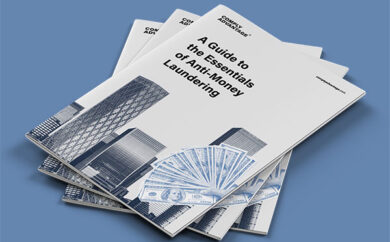Adverse media, also known as negative news, is a vital component of any risk-based anti-money control system and one of the most effective safeguards for banks. Financial authorities around the world have made screening for negative media a legal requirement for Know Your Customer (KYC) onboarding, as well as customer due diligence (CDD), and enhanced due diligence (EDD) on potentially high-risk customers. However, it is also a widely misunderstood subject providing numerous challenges for AML compliance teams.
Although no universally agreed definition or approach to adverse media screening exists, it is widely taken to mean searching media sources to find any possible negative news about the individual or business entity being onboarded (or refreshed in the case of existing customers) that might pose a risk to financial institutions in terms of money laundering or terrorist financing.
There are a number of difficulties that quickly begin to emerge at a practical level. What risks are relevant? How do I find relevant risk information? How do I decide if the information found is significant? How much time and effort should I put into finding adverse media? What should I do if the information found is inconclusive?
Unlike sanctions or even politically exposed person (PEP) screening which are binary – the entity is either sanctioned or not and an individual is either a PEP or not – adverse media screening covers a varied range of potential risks related to predicated criminal offenses that result in the proceeds of criminal activity. This can range from all forms of trafficking, fraud, cybercrime, and terrorist financing to intellectual property theft. The closest guidance to defining what risks these are was provided by the Financial Action Task Force (FATF) which lists over 20 specific crimes that lead to money laundering. The extent to which these categories of crime are reflected in the regulations and legislation of individual countries varies considerably, but there is increasing convergence in adopting this range of offenses in major financial jurisdictions such as the EU, USA, UK, and Singapore.
Recognizing the need for standardization in the way banks approach adverse media screening in their due diligence operations, the Wolfsberg Group recently published an FAQ Guide in their series on negative news screening.
Yet a huge challenge remains for any regulated entity: How to synthesize the vast amounts of data available in the public domain from the array of data points across the entire internet including deep web, surface web, websites, blogs, and social media as well as broadcast and print media. How do firms find the proverbial ‘needle in the haystack’ – the actionable risk intelligence on an individual or business customer that could be indicative of a crime?
Quite apart from the time taken, the cost of acquiring, processing, and acting upon any information found, and then ensuring that information found can be trusted, compliance analysts need exceptional skills to interpret often conflicting information.
How can this problem be overcome? Traditionally, banks have relied on a combination of sources including structured and unstructured data sets which are curated by specialist firms but are costly. Google searches are still heavily relied on by many firms despite the obvious shortcomings of using search engines for financial crime compliance. They are low-cost but ineffective.
New solutions are essential. For example, regulators in the United States have added sharper teeth to FATF guidelines by enforcing the customer due diligence (CDD) rule requiring covered financial institutions to maintain “appropriate risk-based procedures” to continuously monitor and update customer information.
Technology in adverse media solutions is leading a revolution in this area by enabling firms to acquire meaningful and relevant risk intelligence quickly and efficiently and without the mountains of media findings found by traditional methods needing to be read and interpreted by analysts. A combination of machine learning and natural language processing technology can be trained to find media articles of relevance including in local languages in the selected areas of predicated offenses that relate to money laundering and terrorist financing risks.
This revolution in adverse media screening is delivering actionable intelligence, empowering organizations to manage higher levels of risk, and for compliance teams to spend their time analyzing, interpreting, and understanding real risk rather than reading endless articles.
In today’s complex environment, financial regulators are on high alert for money laundering risks. Financial institutions should look for better solutions to conduct adverse media screening and avoid manually carrying out screening with a simple one-time Google search. An adapted adverse media screening solution can successfully automate the timing of screening based on a financial institution’s designated parameters, access and validate a larger number of credible sources, scan a massive trove of information, and reduce the number of false positives potentially clogging up the investigation and escalation phase process.
Celent report: Maximizing the Value of Adverse Media Monitoring
For this report, leading research and advisory firm Celent interviewed global banks from across the world, providing practical tips on how adverse media can be integrated into an existing AML value chain.
Download now
To explore more about the practical benefits of adverse media for compliance teams, explore the pieces below:

